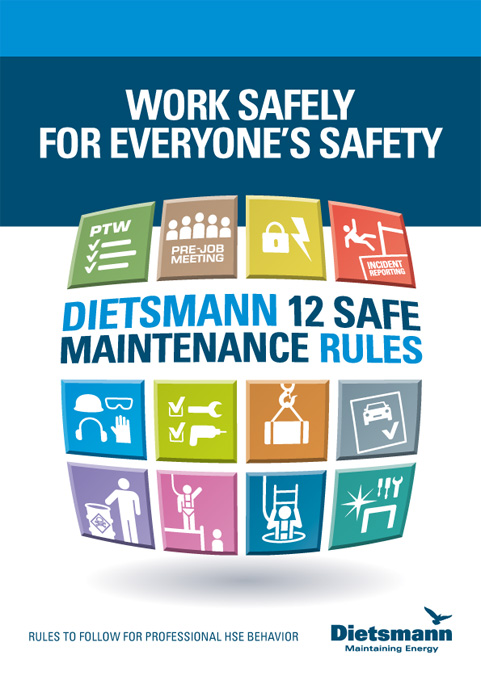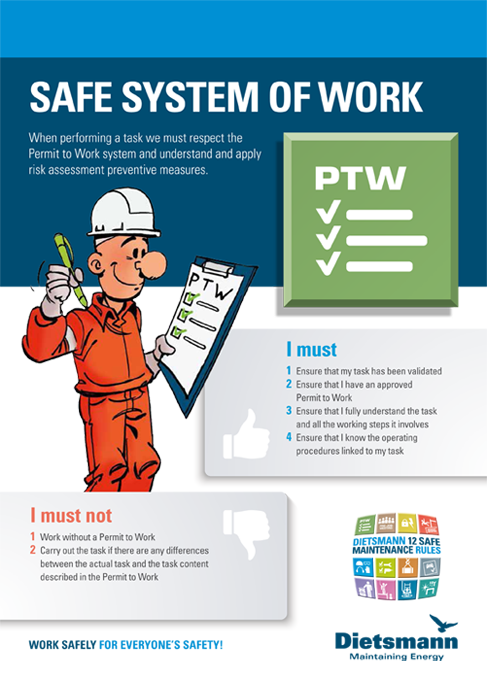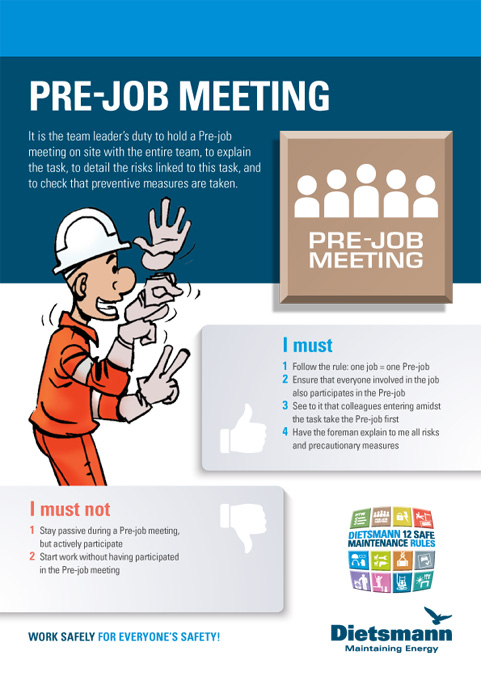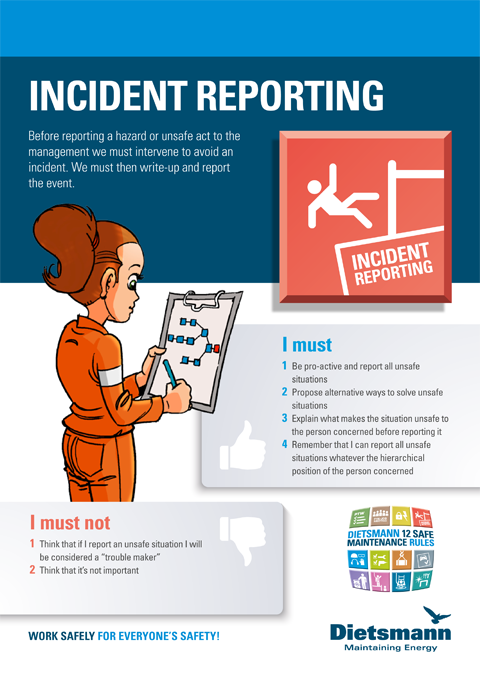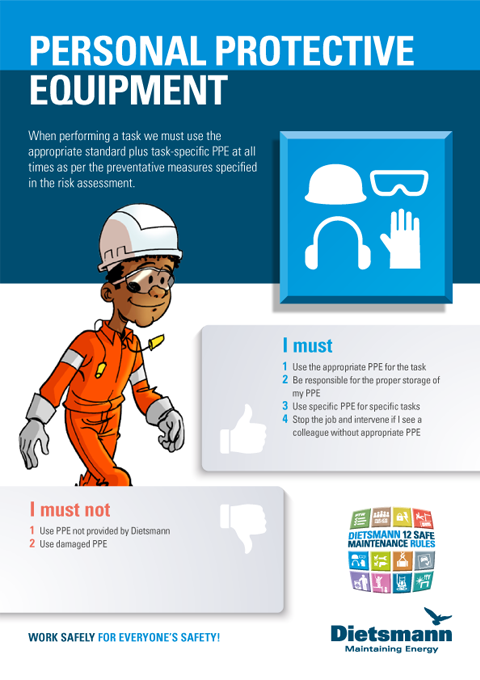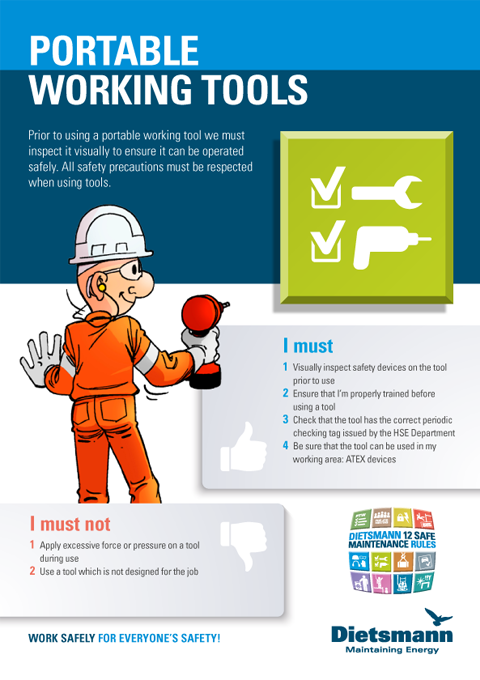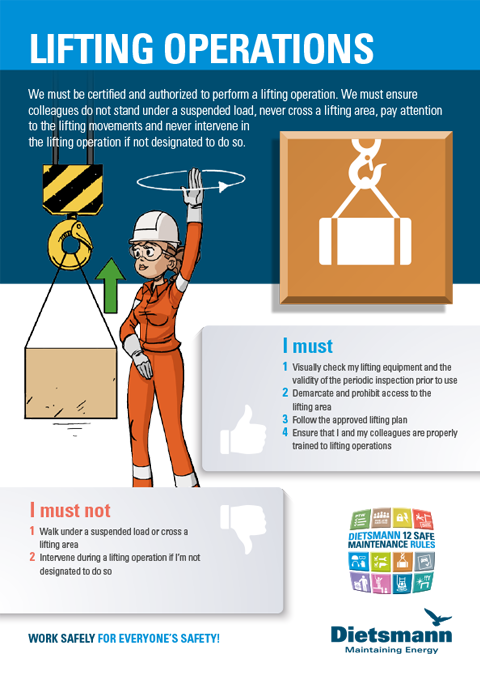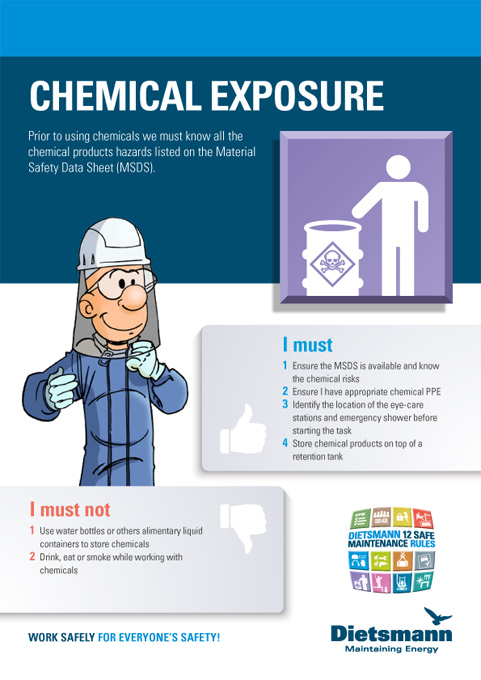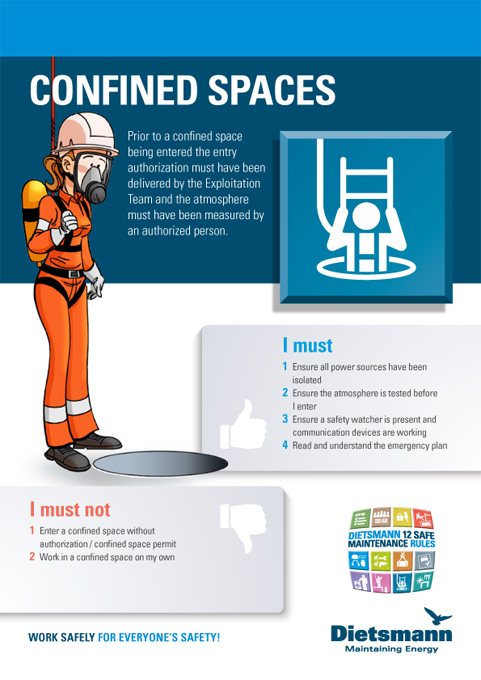12 Safe Maintenance Rules
We wanted to have our own rules directly related to our core business. We already apply the client’s rules on site, but we strive to be more focused on our activities in order to maintain the highest HSEQ standards. Our goal is to address the essential issues related to the key risks our employees face during their day-to-day operations.
Which is why, Dietsmann launched a 12-month HSEQ campaign focusing on 12 Safe Maintenance Rules that relate directly to the Company’s core business and address the key risks faced by Dietsmann’s employees. The 12 Safe Maintenance Rules are fully integrated into and applied during the day-to-day operations of every employee and are included in Dietsmann’s HSEQ Management System. The ‘Dietsmann 12 Safe Maintenance Rules’ campaign is available in seven languages. Training sessions focusing on one rule per month were organized.
Work safely for everyone’s safety!
What is a rule?
A rule is an appropriate principle regulating the practice or procedure of a specific activity. Following rules is compulsory.
Why these rules?
We wanted to have our own rules directly related to our core business. We already apply the client’s rules on site, but we strive to be more focused on our activities in order to maintain the highest HSEQ standards. Our goal is to address the essential issues related to the key risks our employees face during their day-to-day operations.
General presentation
What are the 12 Safe Maintenance Rules?
- Rule 1 Safe System of Work
Respecting the Permit To Work and understanding and applying the Risk Assessment preventative measures. - Rule 2 Pre Job Meeting
The importance of the Pre Job Meeting to ensure the entire team understands the task and related risks and all necessary risk prevention measures are in place. - Rule 3 Hazard Isolations
The importance of ensuring all isolations are in place and validated and the precautions to be applied, especially for electrical isolations with the LOTO (Lock Out Tag Out) system and mechanical isolations. - Rule 4 Incident Reporting
Responsibilities at each level in the organization regarding reporting, from anomaly card reporting for the workforce to accident reporting to the management. - Rule 5 Personal Protective Equipment (PPE)
The PPE specifications and the necessity of using the standard plus task-specific PPE at all times. - Rule 6 Portable working tools
The steps to be followed prior to using a portable tool, the importance of using the right tool for the task and safety precautions when using tools. - Rule 7 Lifting Operations
All the precautions to be applied during lifting and what to do and not do while a lifting operation is in progress. - Rule 8 Driving a motorized vehicle
What authorizations are required, the rules to be observed, defensive driving courses and the alcohol policy. - Rule 9 Chemical Exposure
Knowing all the hazards and working safely with chemicals. - Rule 10 Work at height
Specific precautions to be applied when working and preparations for working at height including the use of scaffolding and safety harnesses. - Rule 11 Confined Space
The authorizations and checks required before a confined space may be entered and specific precautions related to working in a confined space. - Rule 12 Cleaning and storage of working area
Why working areas and workshops must be kept clean and equipment must be stored tidily.


